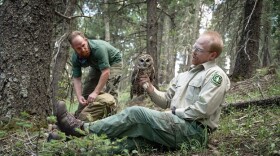In 2013, hiker Gary Hartley stumbled upon the fossilized remains of two mammoths in the Rio Puerco Canyon on the Colorado Plateau in northern New Mexico.
Archaeologists who examined the fossils saw evidence that the mammoths had been butchered by humans. At first, they believed that big game hunters of the Clovis culture had done the butchering. Clovis mammoth butchering sites, dating back 13,000 years, are well known in North America.
But radiocarbon dating placed the age of the Hartley mammoth fossils at 37,000 years ago, far earlier than the estimated arrival of the Clovis people.
In 2022, a team of archaeologists from the University of Texas presented detailed evidence supporting the conclusion that the Hartley mammoths were indeed butchered by humans, using stone and bone tools, and controlled fire.
If so, this indicates that humans inhabited North America far earlier than Western scientists previously believed. Their conclusion is not universally accepted, and the arrival of humans in the Americas remains a subject of academic debate.
Other evidence, however, supports the idea of an earlier human migration, including fossilized human footprints in New Mexico dated to 22,000 years ago, and several archaeological sites in Mexico and South America dated to 25,000 years ago or more. Genetic evidence supports a very ancient dispersal of Asian people into the Americas. Indigenous peoples say they’ve been on this land since time immemorial.
It’s a fascinating question that continues to unfold with new ideas, research and archaeological findings.
This Earth Note was written by Steve Schwartz and produced by KNAU and the Sustainable Communities Program at Northern Arizona University.







